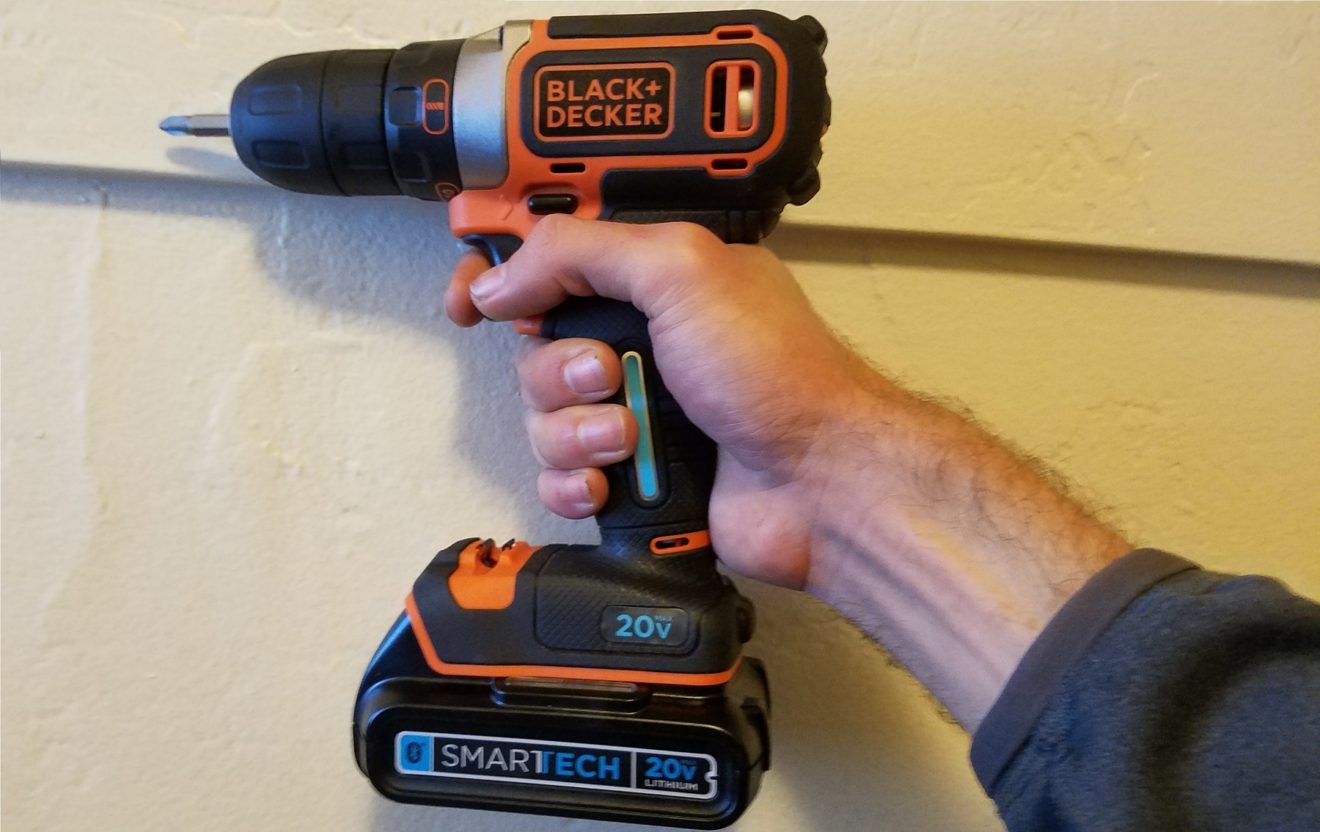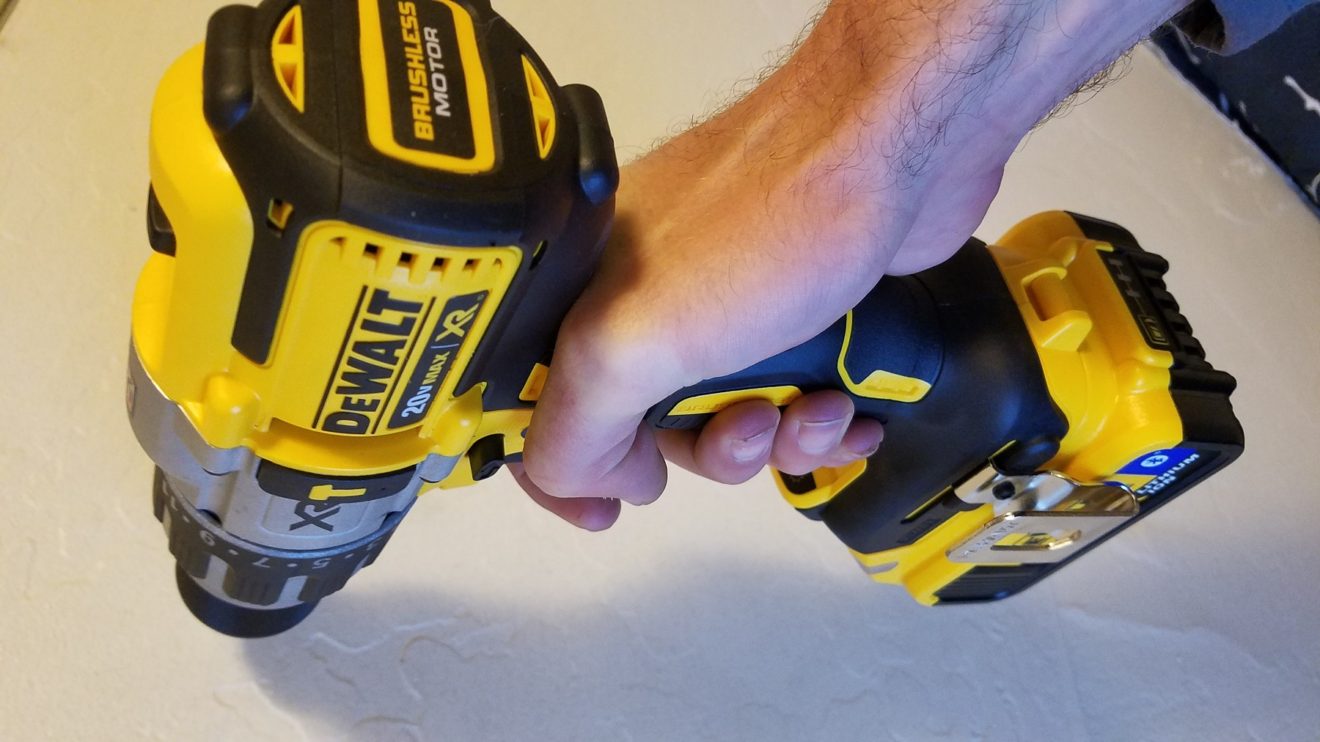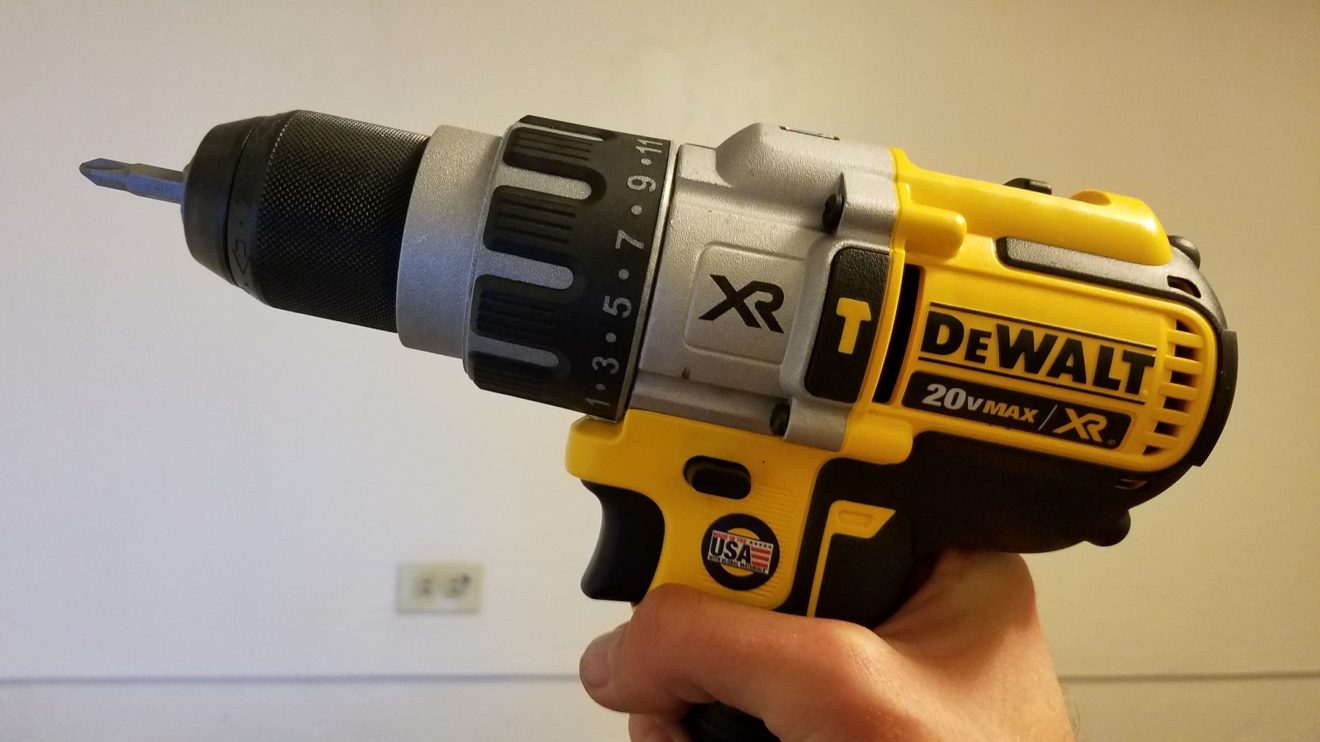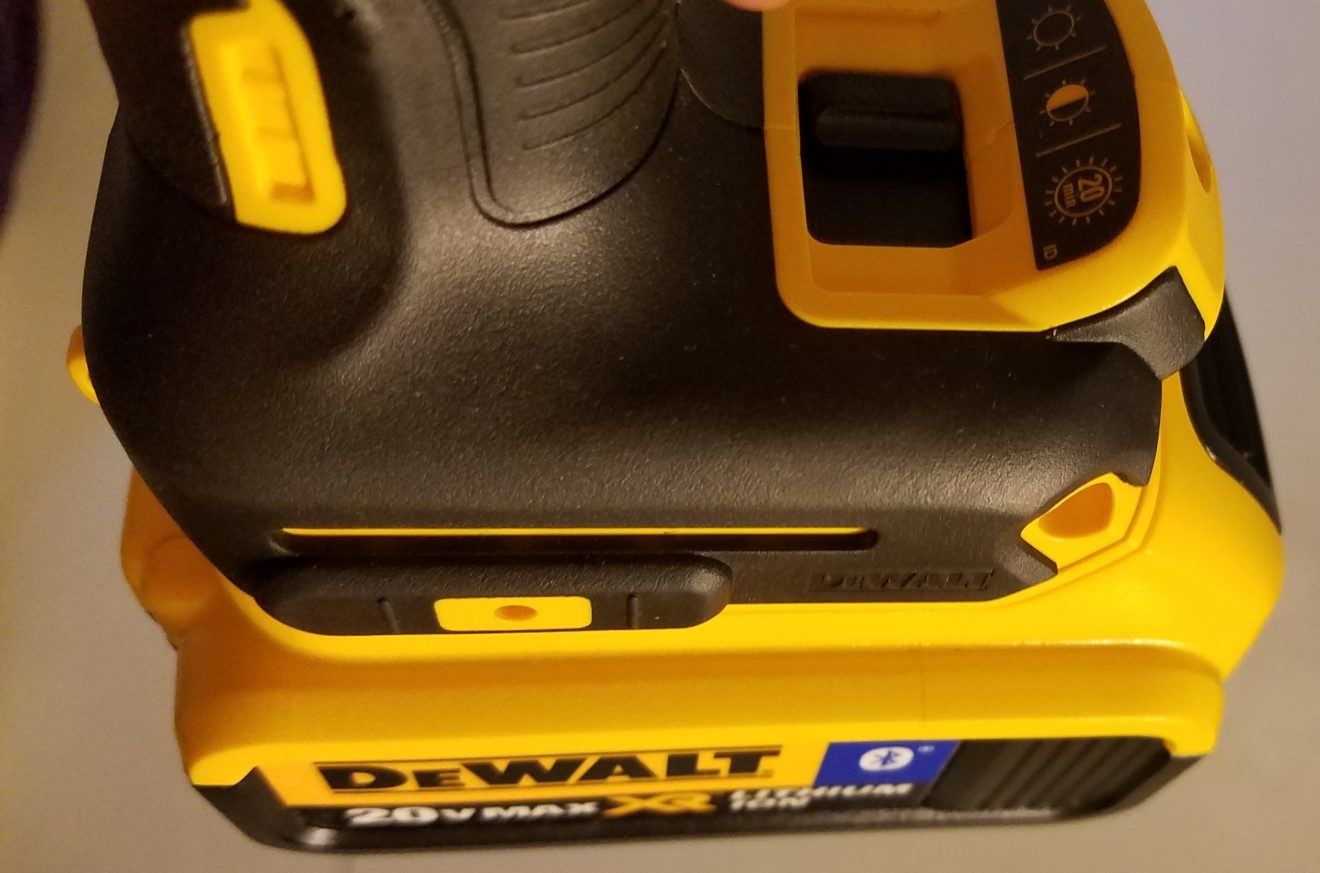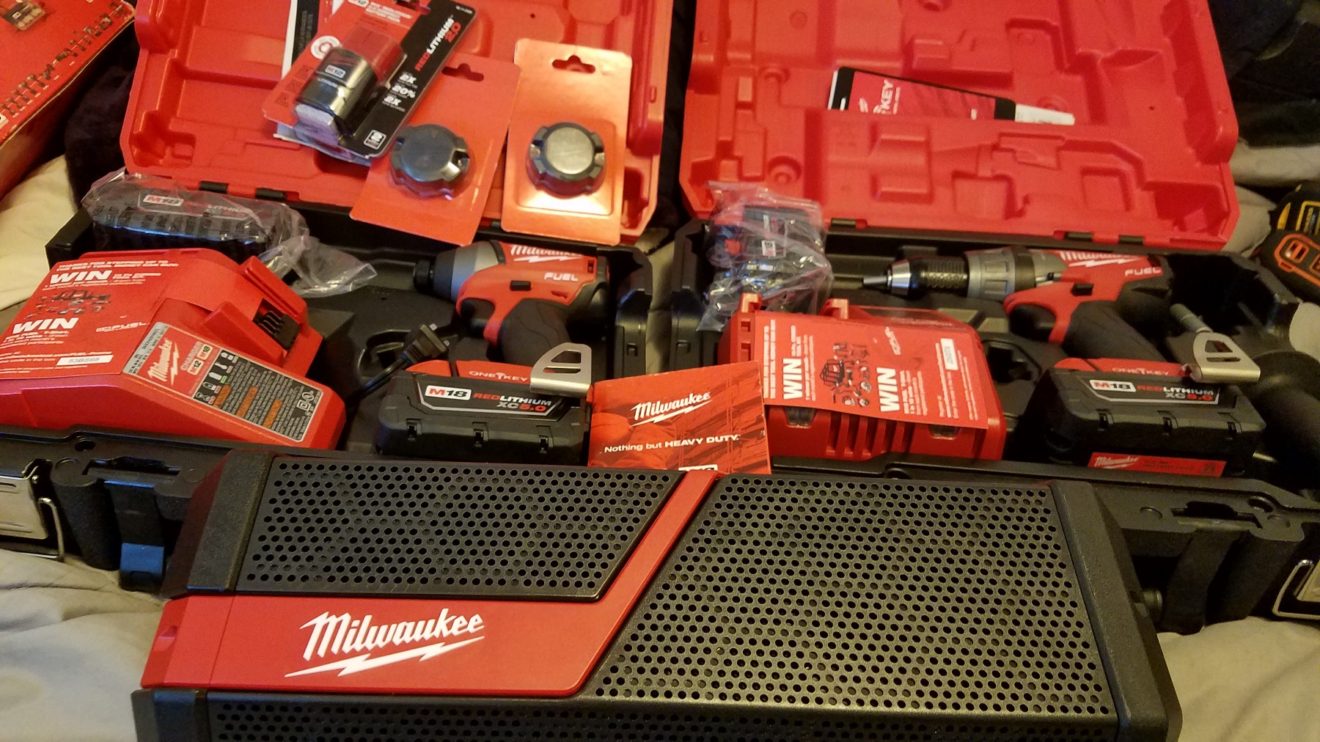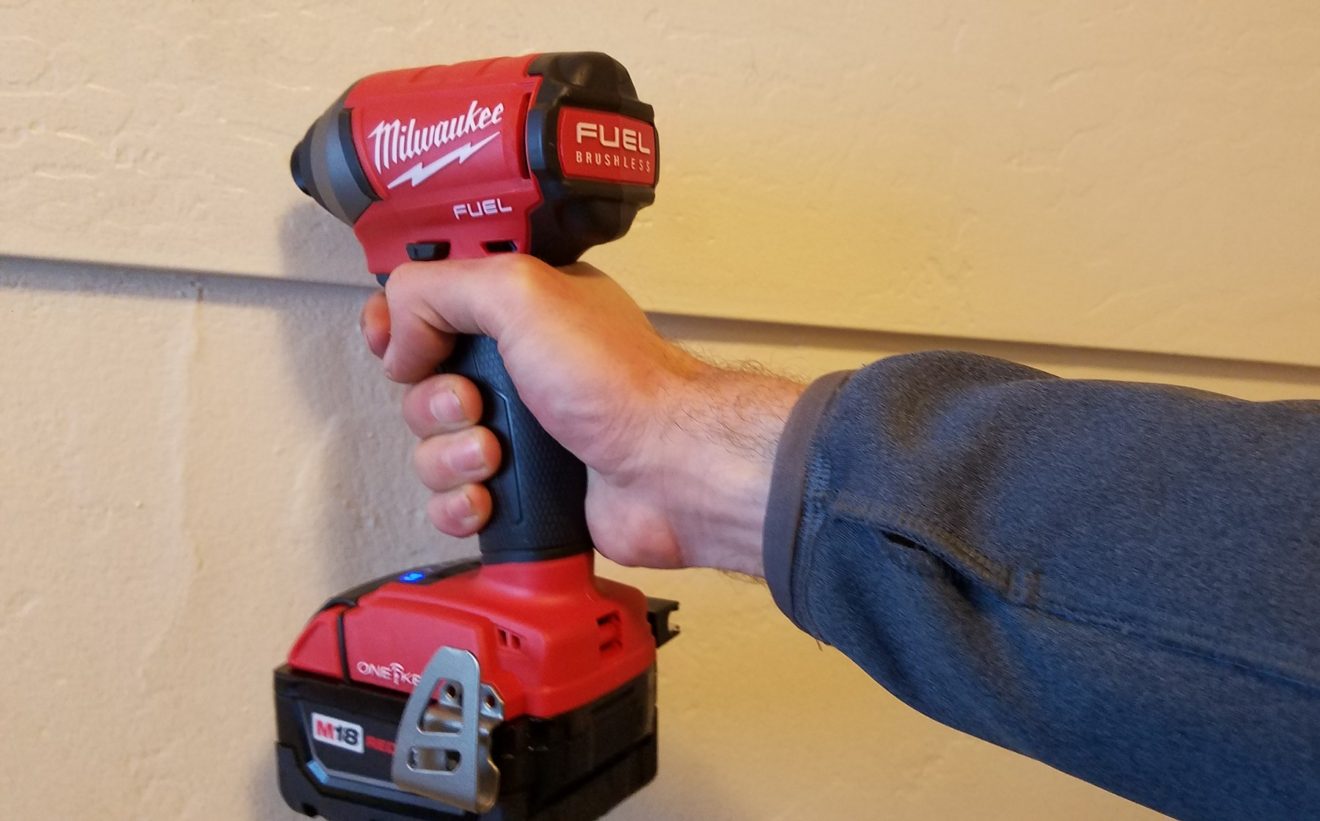Like any guy, I have a bit of a soft spot for tools. Power tools and computers are my favorite, and a look at any pawn shop’s inventory will tell you I’m not alone. Tools are what set people apart from animals – it’s how we defend and feed ourselves, even built everything in society. There’s nothing that makes you feel more powerless than not having the right tools for the job when a situation comes up.
I’m not much of a plumber, but I’ve worked on more than a few cars as a symptom of growing up lower middle class. I know my way around electronics and have done some commercial and residential carpentry, painting, flooring, and basic repairs. This year I’ve been living with a contractor who does landscaping and other blue-collar work.
When something breaks, I like to roll up my sleeves and fix it, which takes the right tools. Of course, when I lost my job at the bank, many of my power tools were among the first things sold to make ends meet.
I decided it would be fun to check out some of the latest tools on the market to see how they fare. A second professional opinion on top of my hobbyist opinion gave a great perspective on what was worthwhile and what’s just a flashy way of jacking up prices to early adopters.
Evolution of Tooling Power
Ok, so we’re not necessarily the only animals that use tools. Chimpanzees, for example, create specialized tools from sticks and stones for purposes of hunting and foraging. Millions of years ago, our ancestors used stone tools called Oldowan to cut animals open and eat them.
Soon we were creating hand axes and carrying them around, recognizing the value of these tools and their role in our survival. Tools were at the foundation of our learning to farm, build homes, and create the modern technologies we enjoy today.
In 1895, German engineering company C&E Fein combined a manual drill with an electric motor to develop the world’s first power tool. In 1916, Black + Decker Manufacturing Co. (now known as Stanley Black + Decker) developed and filed a patent for the first portable electric drill. Although portable, it still required a cord to the heavy battery unit, because that’s just where battery technology was back in those days.
Black and Decker later entered the professional market by purchasing Dewalt in 1960, and in 1961, the company developed the first cordless power tool. It led to the company being contracted with Martin Marietta Corporation to develop tools for NASA, including a zero-gravity impact wrench for Gemini and a cordless rotary hammer drill for Apollo.
These days, modern technology allows for these cordless tools to draw more power from smaller batteries. In fact, the Internet of Things is revolutionizing the tool industry once again, as I learned from my talks with the tool companies.
Bluetooth, Apps, and Connectivity
Modern power tools put everything developed before them to shame. Not only are they running 18-20v lithium ion batteries, but they’re including Bluetooth connectivity, GPS, smartphone apps, and other IoT functionality to tools. In fact, once connected to a smartphone properly, you can gain full control over some tools while providing access to your phone’s technology.
While relatively new to the consumer market, these technologies have been widely used by professionals for years. For a large contractor managing 100 employees on multiple job sites, being able to remotely monitor battery life or locate tools is a godsend. As Timothy Dahl points out in Popular Mechanic, however, these features are a lot less useful for your average consumer who doesn’t need yet another app clogging up their smartphone.
But these are hardly the latest true innovations from today’s power tools. Quieter motors producing more power, sometimes even lubricated with hydraulic fluid, lights, and other features make these things more impressive than previous lineups. I wasn’t able to get them all in, but I got enough to learn how they stack up.
2017’s Best Power Tools
So far, I mostly contacted companies regarding their cordless drills and impact wrenches. I did, however, get a few other things here and there. Hopefully I’ll get some outdoor tools in by summer to see how they fare. Rather than updating this list, I’ll keep up with incoming tools as they come in and post a round-up at the end of the year after we’ve had time to really put them through some DIY projects.
We’ll work on getting some YouTube videos up as well. Now that I have some decent recording equipment, we should be able to get some great video and audio of these things in action.
Black and Decker SMARTECH 20V MAX Drill (BlackandDecker.com)
The cheapest power drill on this list at $80, Black and Decker’s Smartech drill is an entry-level power tool for those who just need to occasionally drill some holes to hang a shelf or other simple repairs. Black and Decker’s drill features a 20V Smartech battery that has Bluetooth connectivity and a USB charging port.
Using the app, you can monitor your battery power and even remotely lock the battery so your tools can’t be used without your permission. While perusing the Google Play reviews for the Black and Decker app (click here for iOS), most of the bad reviews were because it came up when people searched for the slow cooker. These people were disappointed by it being the wrong app, but everything seems fine on that end now, as I could clearly see both apps.
The app itself seems rudimentary. While very graphic, important information like the battery temperature are hidden away behind several screens. That’s the kind of thing that should be front and center. When locating the battery, a light will flash and it’ll beep so you have several clues to find it. You can also remotely lock the battery and enable/disable USB charging.
Registration is made a pain by ridiculous password restrictions that are entirely unnecessary. Why does my password need to start with a letter? Nobody’s purposely going to steal my B&D drill, and if they do, they’re not going to take the time to hack into my account to unlock the thing. The reward simply isn’t worth the effort, and by limiting the first character, you’re exponentially decreasing the time it takes to hack into it if it were.
While the app includes DIY projects, it’s really just the mobile version of the DIY page on the company’s website. Overall you can tell this app was just an afterthought, and the company would’ve done much better for itself copying DeWalt’s app interface, which is much more useful and intuitive.
Although barebones, this drill does work and also includes another useful feature. Pressing the button a little bit on the drill will activate a small LED light that’s very useful for seeing where you’re drilling. As soon as you release the button, the light goes off. It’s handy to have when working in dark corners and such.
The small size of this drill makes it ideal for small-space living, though you won’t get much torque out of it, so you’re for sure going to need to predrill holes for screws. Definitely a step up from a regular screwdriver, this drill is about as basic as it gets, and you’re not going to get much use out of it working on your car.
Craftsman Pro Series Toolboxes (Craftsman.com)
This isn’t just your ordinary toolbox. It’s a smart toolbox with a Bluetooth lock and integrated power strip including both 12V and USB charging slots. Unfortunately I wasn’t able to get a hold of the actual toolbox to see how well it works. Sears’ marketing rep did try to convince me to include it based on their marketing materials unseen, which I’m happy to do.
Typically when brands want a review done without product on hand, it’s because they know it’s garbage. It’s a really strange thing to request that makes me wonder what kind of unethical slouch I am. No real journalist wastes their time on such requests, but since it’s Sears, I can take a brief moment out of my busy day for PR charity.
I actually worked for Sears for a few months (was fired on my day off), and my dad spent some time working there as well during his work release for an Office Space-style theft on Fry’s. I’m familiar with their in-store brands and do respect Craftsman tools (or the warranty, at least, as they can’t compare to Snap-On, Mac, and a slew of others). However, I also worked in their electronics department and understand how ridiculously poor their technological innovation is.
I’ll never forget how pathetic of a brand Sears was to work for. Our commission structure meant nobody was motivated to do anything, the corporate purchasing department didn’t exist, inventory in the warehouse was unorganized, the worst retail jobs I ever worked (and I’ve worked for Circuit City, Best Buy, Ross, GNC, and a few others).
Security literally spent all their time watching employees for theft while my coworker was reprimanded for breaking company policy and following a shoplifter out the store who loaded two computers onto a cart and walked out in broad daylight.
My elation at one time selling an overpriced Bose sound system for the best (~10%) commission offered was quickly deflated the next paycheck when the customer returned it saying Bose forgot to put the receiver (the heaviest, most important part of the unit) in the box. Management let him return it, despite it being absolutely impossible. On top of that, the head of security borrowed my Army trench coat for his outdated Matrix costume and never returned it, rounding out the many reasons I’ll never again shop at Sears.
Still, we’re anxiously awaiting when we actually can get our hands on this toolbox to see if Craftsman delivers or is simply falling deeper into the Kmart bargain bin. I can’t even include a pic because original images matter online. Thanks, Sears.
DeWalt 20V MAX XR Brushless 3-Speed Drill and Hammerdriver (Dewalt.com)
Stanley Black + Decker’s professional brand, DeWalt is the power tool of choice for a ton of maintenance and construction guys. That’s because they’re fairly priced while providing considerable power. In addition, the company began offering Bluetooth-connected batteries in its 20V Max series.
While a different app, DeWalt’s Tool Connect app (click here for iOS) provides the same features as B&D – battery monitoring, tool locking, and pairing additional batteries. These batteries are interchangeable among DeWalt’s 20v Max line of power tools. We got the XR brushless 3-speed drill/driver ($209.99) and hammer drill/driver with hog wrench ($299) to play with. Unfortunately they didn’t include a charger, so we didn’t get much time with them.
You can set each battery with actions such as alerting you or disabling the tool if it’s out of range, or alerting on low battery, high temperature, and charge completion. If you’re missing a battery or trying to identify it, you can trigger it to flash all the lights on and off. There’s even a lending option where you can set a date and time to disable the battery if it’s not returned. Your battery’s model and serial number will be documented as well.
The app is a bit clunky and asks for a ton of information to install. There’s really no need for it to have access to contacts, and it can’t be stored on your memory card if you have a smartphone that uses that storage system. It’s sitting at 27.09 MB on my phone after a day, and we’ll see what it looks like after a month of usage soon enough. It’s definitely a much better interface than B&D’s app, however, and
Like B&D, DeWalt’s XR tools include a light, although this one is much brighter and includes a setting to stay on for 20 minutes afterwards in case you need it. Regardless of what setting it’s on, the light stays on for a few seconds after releasing the trigger. Personally I prefer the control of the light turning on and off at my command and found myself often removing the battery and replacing it real quick to turn the light off (especially when it turned on by accidentally bumping the trigger).
The 20V lithium-ion battery and high efficiency motor is advertised on the site to provide 75 percent more runtime vs the 18V nickel cadmium brushed equivalent on the impact drill, although we can’t test that until we get a charger. The Hammerdriver is capable of 0-450, 0-1300, and 0-2000 RPM in drill mode and 0-500, 0-1500, and 0-2250 RPM in hammerdrill mode.
Brushless motors in the drills are also providing 57 percent more efficiency than their brushed counterparts. I’ve also noticed from my limited drone experience brushless motors last much longer. Whether working around the house, in the garage, or on your car, these XR brushless 20V Max power tools from DeWalt should be able to get the job done. We’ll find out for sure when we get a charger.
Milwaukee M18 FUEL with ONE-KEY 1/2″ Drill Hammerdriver (MilwaukeeTool.com)
At the top of the price heap are the $329 and $349 M18 Fuel drill and hammerdrill from Milwaukee tools featuring OneKey technology. Unlike the other brands, the Bluetooth connectivity is built into the actual tools, allowing you to monitor those instead of the battery. It also means the Milwaukee OneKey app allows much more control over your power tools
Once paired with your smartphone, not only can you track and locate tools, but you can adjust the RPM for different presets. You can track how many charge cycles the battery has gone through (which will eventually give you an idea of how long the batteries last you), and track your tool’s performance.
The most robust app feature set, Milwaukee is the only tool company so far that seems to respect computer software technology. Being able to set an exact RPM lets users optimize battery life by exerting only as much power is necessarily to complete the job at hand.
In addition, Milwaukee included a few Ticks, which are bluetooth trackers that can be attached to any tools devices, or even your toolbox to track them. With its own battery and easy installation, this is basically that tracking device you see spies using in Hollywood movies. It’ll help you keep track of all your stuff, even if it was developed before IoT.
As tools, these things are professional grade, with belt clips and solid construction. The drill provides up to 1oo ft-lbs of torque and 2000 RPM, while the impact drill is capable of 150 ft-lbs and 3500 RPM, and you’ll definitely feel that power vibrating in your hands (a common complaint of Milwaukee over its competitors).
The impact drill is also noticeably smaller and lighter than DeWalts – the power drill is as well, but not by as much of a difference.

Even without OneKey, Milwaukee power tools consistently ranked in the top two or three in performance, but being able to customize RPMs and more through the app makes them indispensable. Whether you’re a pro or hobbyist, I’d choose Team Valor over Team Instinct any day.
